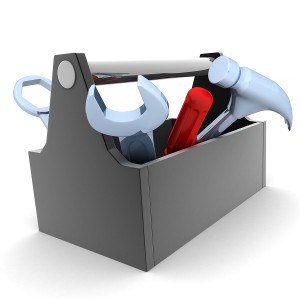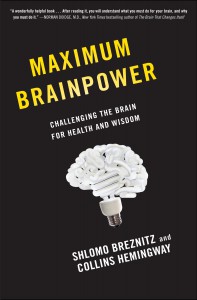Think Fresh: When Is a Hammer Not a Hammer?
 Though the human brain is the most innovative instrument on earth, we remain a conservative species. Most of us relapse to old ways of thinking even when we think we are doing something new. Our brain’s “similar equals identical” mechanism, which comes from experience, is both a good and bad adaptation. Relying on experience, which is how we make sense of the world, how we learn, how we build civilization, is sufficient for most workaday matters. Really big issues, however, are very often similar on the surface but have complicated details and nuances that make them substantially different underneath.
Though the human brain is the most innovative instrument on earth, we remain a conservative species. Most of us relapse to old ways of thinking even when we think we are doing something new. Our brain’s “similar equals identical” mechanism, which comes from experience, is both a good and bad adaptation. Relying on experience, which is how we make sense of the world, how we learn, how we build civilization, is sufficient for most workaday matters. Really big issues, however, are very often similar on the surface but have complicated details and nuances that make them substantially different underneath.
Folk wisdom says that, if we have only a hammer, every problem looks like a nail. Entrenched familiarity causes us to try to fit each new situation into whatever solution we already have in our mental toolkit. We lose the ability to examine our toolkit for new uses. Or to create entirely new tools. All learning comes from making new connections, not relying on old ones. We need to invest in doing new things and trying new approaches to even the routine problems in our lives—especially if we think new ways are unnecessary.
Whoever said that a hammer is a single-purpose tool? It is a general-purpose tool that can act as a weight, door stop, pry-bar, tennis racquet, gavel, sign holder, grappling hook, garden spade, ballast for a toy boat, sounding device to measure fluid levels in a tank, and as a totem and symbol of tribal leadership (see The Earth Abides). Sometimes it can even pound nails.
The innovative use of tools brings to mind a trip to Africa. There are no spare parts in the bush, and the creativity of African auto mechanics is beautiful to watch. Once, the seat broke on an old Land Rover. The only way to repair it was with an oversized soldering iron powered by a propane tank. The soldering iron would have set the cloth seat on fire and burned the vehicle up. After considering the problem for a few minutes, the mechanic left the shop for ten or fifteen minutes. He returned with a bucket of mud and spread the mud over the seat close to where he needed to work. He added water to keep the mud moist as he made the solder. When he was done, he cleaned the seat and the vehicle was on its way.
In the “civilized” world, the garage would order a new seat, several days would be required for delivery, and it would cost a fortune. The same is true for other problems. The shop hooks up a diagnostic tool, finds the trouble, and replaces the part. No one actually repairs anything anymore. All of the things that make life easier also make us less creative. We generally accept the tradeoff because modern devices are more reliable and more energy efficient than earlier technology. The point is twofold: We should get the most of our technology without letting it enslave us, and we should do hard things on purpose from time to time to stimulate our minds.
Another way to avoid mental inflexibility is to deconstruct the problem. Software developers examining ways to reuse code are much more likely to succeed if they pull out individual sections and analyze how the separate parts might be used rather than try to reimagine ways to revise the entire module. By breaking the problem into separate pieces, they untangle their minds from the current utilization. At a higher level, the strategy is to change the context of the problem and to consciously think of ways of removing any preconceived constraints about the nature of the problem.
Getting outside the norm requires intention. Just being aware of our tendency to fall into mental inflexibility helps us avoid it. Simple changes can also help overcome our innate mental inflexibility, as shown by what happens when we travel to a new city. After just a few hours, we begin to develop a cognitive map of the area. We figure out that we turn left at the corner to go to the coffee shop or right to see the cathedral. We find landmarks that guide us back to our hotel. Mastering an unfamiliar environment is perceived as pleasurable. New connections occur. New circuits form in the brain. The antidote to the boredom and waste of routine existence—and the rigidity and decline  that sets in almost immediately—is to put ourselves in situations in which we are not masters! Temporary mental discomfort is the tradeoff for challenging the brain, pulling it out of a habitual mode, and stimulating new connections and capabilities. Like climbing a mountain, we can achieve mental success—and mental pleasure—only when we expend energy.
that sets in almost immediately—is to put ourselves in situations in which we are not masters! Temporary mental discomfort is the tradeoff for challenging the brain, pulling it out of a habitual mode, and stimulating new connections and capabilities. Like climbing a mountain, we can achieve mental success—and mental pleasure—only when we expend energy.
Excerpt from the book, Maximum Brainpower: Challenging the Brain for Health and Wisdom, by Shlomo Breznitz and Collins Hemingway. Copyright © 2012 by Shlomo Breznitz & Collins Hemingway. Reprinted by arrangement with Ballantine Books, an imprint of The Random House Publishing Group, a division of Random House, Inc. All rights reserved.
Related articles:


